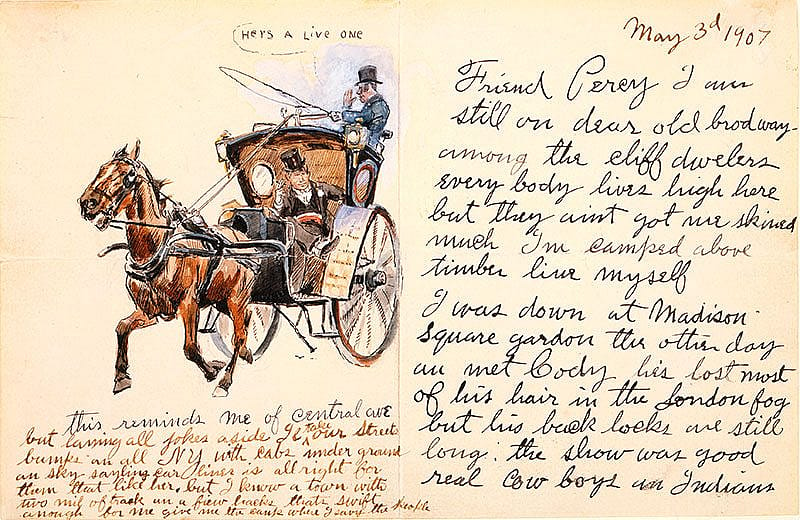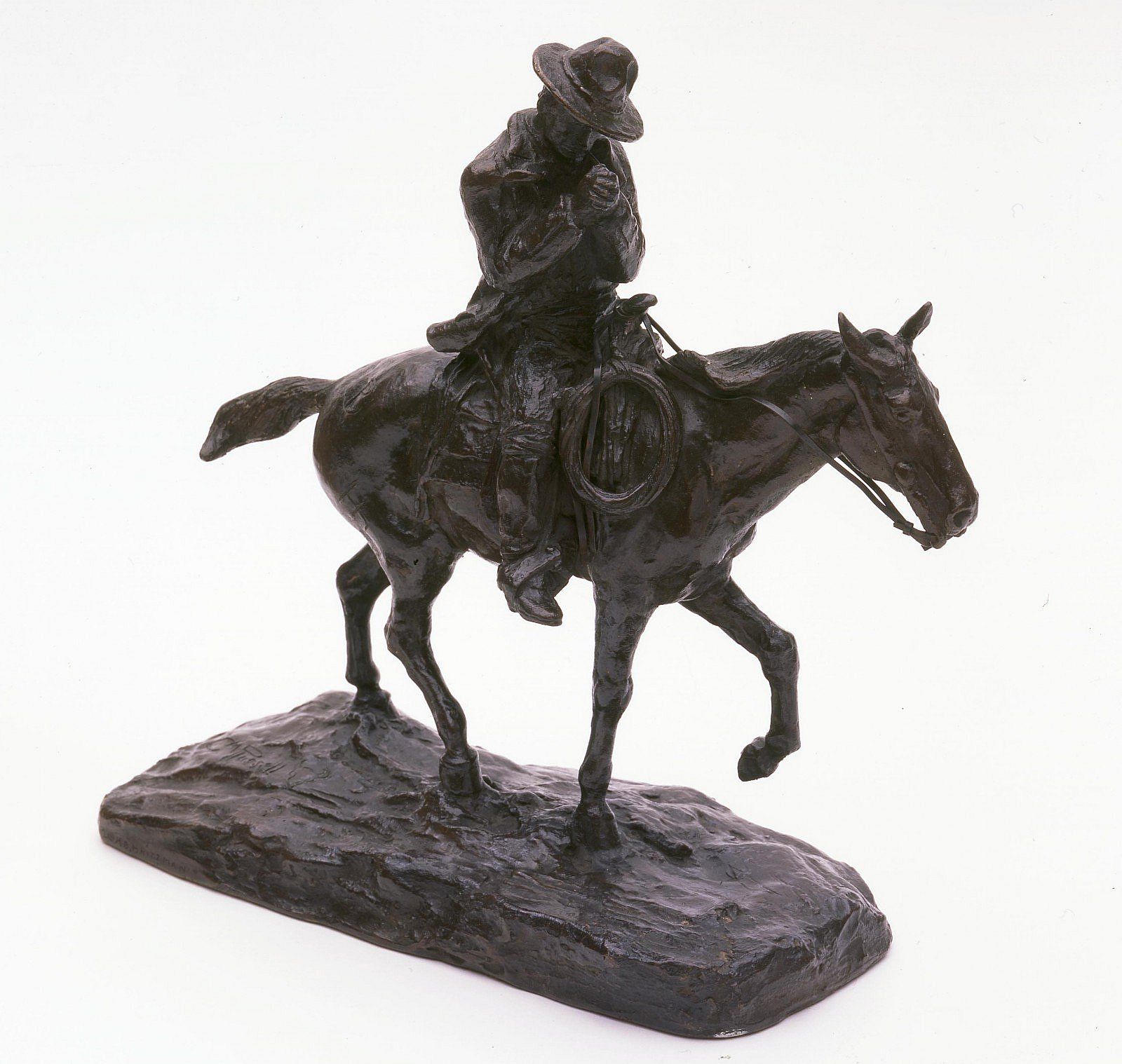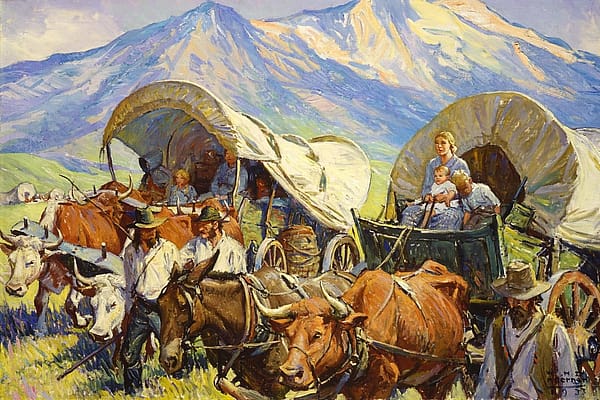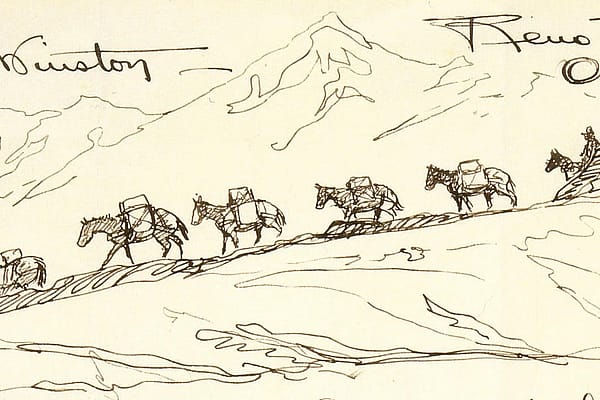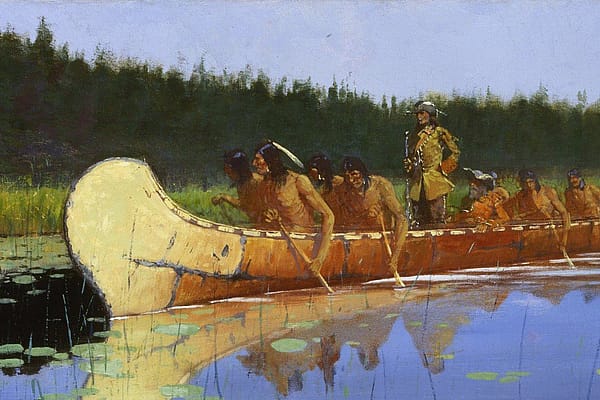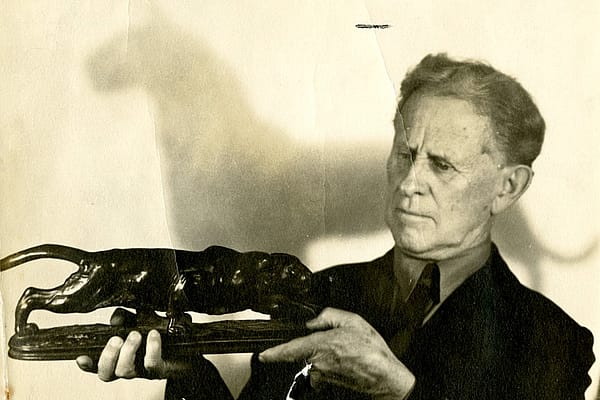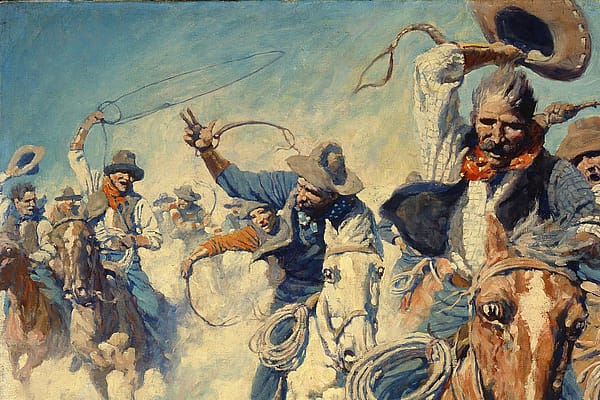
Everything You Need To Know About Charles M. Russell
“Betwine the pen and the brush there is little diffornce but I belive the man makes word pictures is the greater.” – Charles M. Russell
You have questions about Charles M. Russell … we have the answers. Here’s everything you need to know about Charles Russell in a nutshell.
Q: Who is Charles M. Russell?
A: Charles Marion Russell is widely recognized as one of the purveyors of the cowboy myth in western art. Charlie, as he was called throughout his life, was a gifted storyteller, historian, writer, cowboy, advocate for the Northern Plains Indians, and artist.
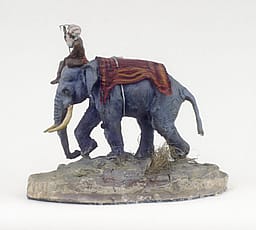
Q: How many works did Charles Russell create?
A: He created more than 4,000 works of art during his lifetime, working in paint, bronze, ink, and wax. He began to work seriously with oils, the medium he is best known for, in 1885. Between 1904 and his death in 1926, he modeled 46 subjects to be cast in bronze. He created his first sculpture, depicting the Plains Indian buffalo hunt, in bronze in 1904.
Q: How many Russell works do you have in your collection?
A: The Whitney Western Art Museum has over 350 works by Charles Russell, including sculptures, paintings, drawings, and illustrated letters. Many of these are works on paper or wax sculptures. These works are more sensitive to light and can’t be shown as frequently as an oil painting or bronze sculpture. Those on view offer an example of Charlie’s oeuvre and represent some of his best work.
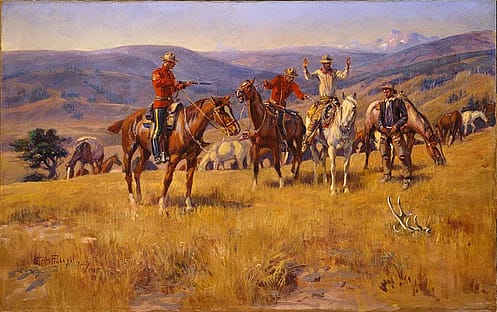
Q: Why is Russell known as the ‘cowboy artist’?
A: Charlie was the first “western” artist to live much of his life in the American West. In 1880, at the age of 16, he moved to the Judith Basin area of Montana to try his hand as a cowpuncher. He would spend 11 years working various jobs and sketching in his free time. Living 46 years in the West, he knew his subject matter intimately, setting the standard for many western artists to follow.
Q: Did Charles Russell market his own work?
A: No. Charlie married Nancy Cooper in 1896. Nancy was his business manager. Under her support, guidance, and iron will, Charlie gained national recognition. His breakthrough success came in 1903 when the couple traveled to St. Louis to see about having Charlie’s paintings displayed at the World’s Fair the following year.
Q: Did Russell have any formal training?
A: No. He was self-taught and took up painting as a hobby. At age 14, his father enrolled him in art school, but Charlie lasted only 3 days. He preferred the active, exciting subjects of his imagination rather than the formal training provided by school. Charlie and Nancy made regular visits to New York City where Charlie worked with notable artists, learning how to lay color. Many scholars believe Charlie’s best work was created between 1904 and 1920, after his trips to New York City.

Q: How did Russell’s work evolve throughout his career?
A: His work always told a story and was based on his own personal experiences, reflecting themes of cowboy life, Northern Plains Indian life, and wildlife. His palette brightened towards the end of his life, color taking precedence over detail and execution.
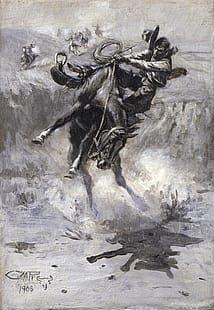
Q: Where did Russell live?
A: Born in St. Louis, Missouri in 1864, Charlie moved to Montana at the age of 16. He would adopt Montana as his permanent home. In 1900, Charlie and Nancy built a house in Great Falls, Montana, and three years later, a log studio filled with his vast collection of Native American and cowboy objects. You can visit the house and studio at the C.M. Russell Museum, located in Great Falls.
Q: Who inspired Russell?
A: During his childhood, Charlie became acquainted with the works of George Catlin, Karl Bodmer, Carl Wimar and Alfred Jacob Miller. Miller’s subject matter and Wimar’s portrayals of the Missouri River tribes left a lasting impression on Charlie. In turn, Charlie inspired several artists, including Philip R. Goodwin, Joe De Yong, and Will James, among many contemporary artists of today.
“If both hands were cut off, I could learn to paint with my toes. It is not in my hands but heart what I want to paint.” – Charles M. Russell
Written By
Nicole Todd
Nicole Todd was formerly the Curatorial Assistant for the Whitney Western Art Museum. She graduated from the University of Oklahoma, with bachelor’s degrees in Zoology and Art History, and a master’s degree in Art History, with a focus on western American art and a specialization in Will James’s art. As Curatorial Assistant, Nicole engaged in art historical research, supported educational programming, answered public inquiries, and contributed to the Whitney’s online presence.
